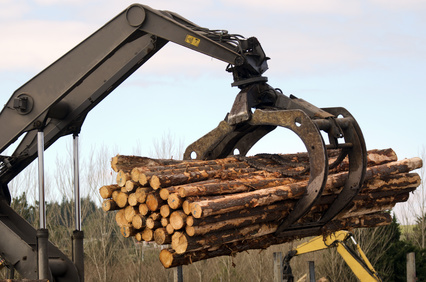The Boreal Caribou Recovery Plan Will Cut Forestry Jobs

If you live on the North Shore, there's a good chance that you're a forestry worker or that a family member, friend, or neighbour of yours works in the industry. The same is true if you're in the Saguenay-Lac-Saint-Jean, Northern Quebec, Gaspé, Mauricie, or Abitibi-Témiscamingue regions.
The forest industry built Quebec's regions. For example, when Col. Robert Rutherford McCormick of Chicago proposed building a paper mill in Baie-Comeau early in the last century, what is now Highway 138 didn't reach very far. Only when the mill opened did the village take shape. Even today, the paper mill lies at the heart of the municipality, near the St. Lawrence River and the centre of town.
Without the forest and the economic activity it generates, the North Shore, the Saguenay-Lac-Saint-Jean and all the other forest regions of Quebec would not have experienced the same level of economic development that has benefited all Quebecers.
However, forestry activity could fall sharply in the fairly near future. This isn't because we lack forests — on the contrary, forest cover has increased slightly over the past four decades. Rather, the reason is that several environmental groups are seeking almost to expel the forestry industry from Quebec's forests, leaving these areas to the boreal caribou, a species that has been placed on the threatened list by the federal government.
Nobody questions the need to establish conservation measures to protect biodiversity. This is why, since the boreal caribou was placed on the threatened species list, the Quebec government has gone to great lengths to protect its habitat by limiting forestry companies' access to public forests. According to the latest estimates, Quebec's boreal caribou population may be just under 7,400 individuals, with about 2,750 of them in areas where forestry activities take place.
Despite this small number spread over a huge territory, environmental groups seek to padlock the forests so as potentially to save a few animals or, more precisely, 96 caribou per year. Each caribou potentially saved in Quebec would mean the direct loss of 31 jobs and $3.8 million in economic activity. For the province as a whole, this would amount to 3,000 jobs lost and $367 million less in economic benefits. This is a sacrifice that many people find unreasonable.
My colleague Jasmin Guénette, Vice President of the Montreal Economic Institute, went to Baie-Comeau in early July to produce a short documentary film on the economic impact that could result from a new "Caribou Recovery Plan" even more restrictive than the existing one.
The aim of his work was to give a voice to workers and other people in the field and to gain an understanding of the reality on the ground — not the reality perceived in the offices of Greenpeace or imagined in the offices of the top forest supervisor in Quebec City, but the reality of Sylvain, Carl, Judith and Denis, to mention just a few individuals. These are people who work in the forest, who have families, who like their jobs and, above all, who love living close to the forest.
The boreal caribou doesn't need to work to feed itself. For two-legged animals, it's different. This difference does not mean we shouldn't worry about the environment and biodiversity. This is something that has been understood for a long time by workers and other people involved in forest activities. But some people seem to think the boreal caribou is worth more than everything else.
Produced under the direction of MEI Vice President Jasmin Guénette in the summer of 2015, the short documentary film entitled Caribou Conservation and the Future of Quebec's Forestry Regions may be viewed on the MEI website.
Michel Kelly-Gagnon est président et directeur général de l'Institut économique de Montréal. Il signe ce texte à titre personnel.

